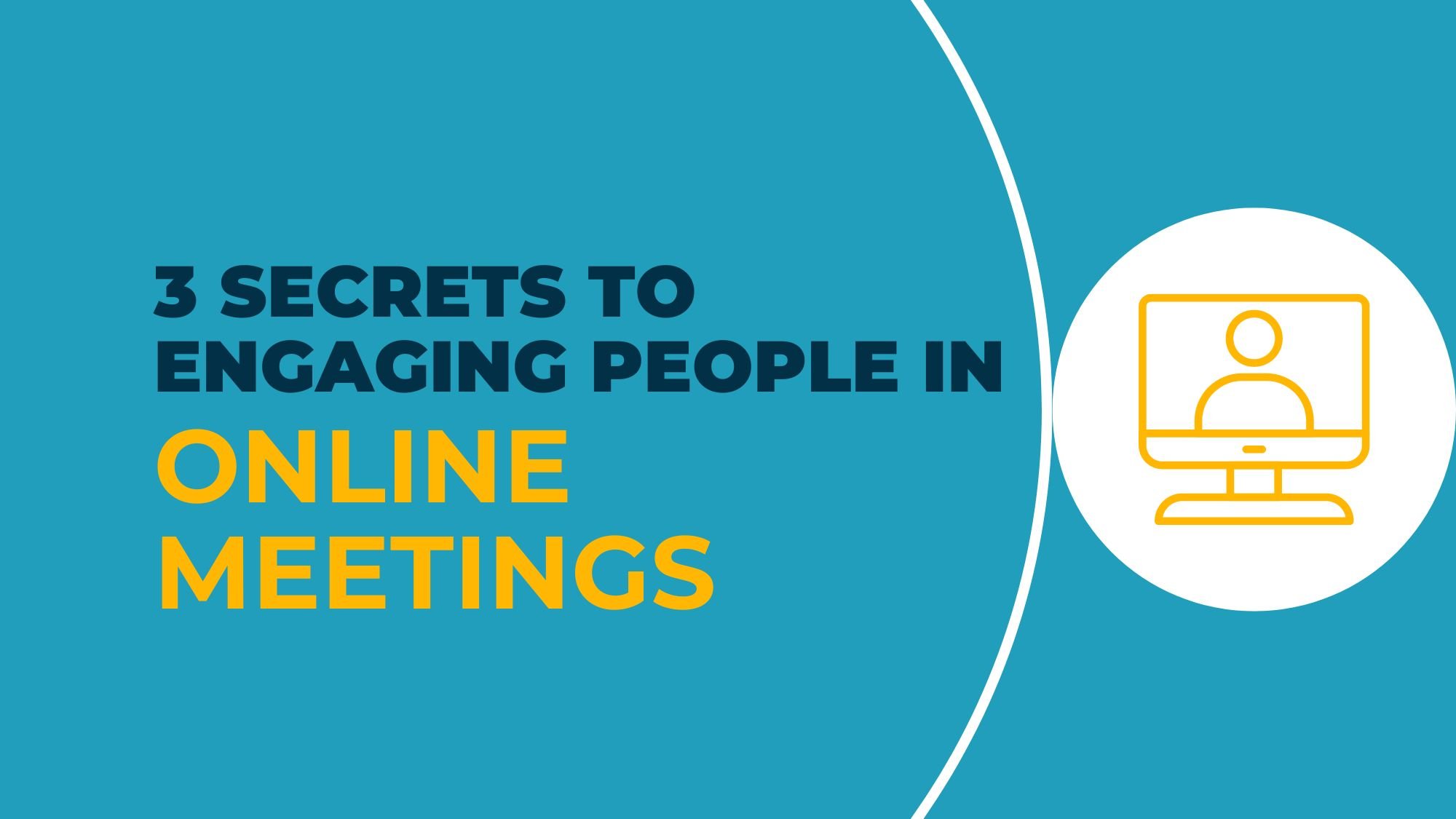3 secrets to engaging people in online meetings

Last week I attended three virtual meetings - one was a true masterclass in online delivery; one was fine... and one was terrible.
The masterclass was the highlight of my day and left me skipping off to do all sorts of inspired thinking and writing.
In contrast, I left the terrible one after 15 minutes. (My time is too valuable to waste while somebody mumbles into their jersey. And so is yours, by the way!)
I left it even though I cared about the topic and the people who were there. 😔
It's not that you're meeting, it's how you're meeting
Many people blame the medium itself for their discomfort during online meetings. However, there's an intriguing piece of research that suggests it's not the medium, but how we use it that affects our experience.
(If you're interested, it's called the CANDOR study and there's an accessible summary here.)
A lot of my work at the moment is about helping people to embrace the technology and learn to use it in a way that works.
As a public or community sector manager or advisor, you likely spend a lot of time in virtual meetings.
By implementing three findings from the CANDOR research database, you will find yourself becoming a more engaging version of yourself online.
Remember, it's not about being perfect or inauthentic, but about making small adjustments that can lead to big improvements.
The three key findings
Put simply, the three recommendations are:
1. Talk Faster
2. Vary your volume
3. Respond intensely.
Let's unpack those in more detail.
Talk faster
One of the things I love about podcasts and online learning is the ability to speed up the speaker.
I typically listen to podcast at 1.2x to 1.6x the speed. And I'll often watch Youtube videos at x2 speed. Our brains are still able to process the information. It actually helps us to stay focused because there's less "fluff time".
So I'm not surprised that the CANDOR study found that good conversationalists on Zoom are those who talk faster.
Don't worry, this doesn't mean you have to talk like a chipmunk on steroids.
Just aim for six words per minute faster than your normal pace.
That was one key difference between "good" and "bad" conversationalists in the research database.
Vary your volume
Humans love minor variations on a theme. (Wholesale change can freak us out a bit, yes. But we love small variations.)
Just look at any industry with yearly trends. Clothing and cars are two great examples. Every year they make dozens of minor tweaks - many of which have no impact on the actual function of the product.
Are last year's jeans wearable?
Do they keep you warm and dry?
Yes... but they seem to be quite narrow compared to this year's baggy jeans!
It's the same with online meetings.
Our brains enjoy the variation of pace and pitch. And the CANDOR database confirms that.
Having a good quality microphone is key to this of course. If you're still using the laptop mic, you're simply going to come across as shouty when you try to vary your volume, rather than as an engaging online presenter.
Respond intensely
Want to appear more engaged and attentive?
Apart from actually being engaged, one other tip is to nod and shake your head while listening to others speak.
This simple gesture can make all the difference in how people perceive you during virtual conversations.
When you're in-person, you can convey so much through your body language. But it's lost online.
You need to ramp up your physical responsiveness to make up for this.
Want to see this in action?
My Vibrant Virtual Meetings programme teaches teams how to facilitate virtual meetings that enable change outside the meeting room.
You'll learn the practical stuff you need to feel relaxed online.
Plus more of the principles like I've touched on in this post.
Along with how to get yourself prepared for any virtual gathering.
People tell me it's the highlight of their professional development calendar, and it brings so much more satisfaction and lightness to their hybrid-working arrangements.
If that sounds like something you'd like for your own team, you can learn more here.